Undoubtedly, you may have observed in the autumn sky, in its eastern region, a group of four stars creating a relatively large rectangle. This is known as the Pegasus constellation, or more specifically, its most prominent stars. Due to its distinctive shape, referred to as the Great Square of Pegasus, locating it in the sky is quite simple. However, not all the stars within this shape are part of Pegasus; the top left corner actually belongs to Andromeda.
Mythical Tale of the Pegasus Constellation
The Pegasus constellation holds a prominent place in ancient folklore, leading to the creation of numerous captivating myths surrounding its origins. Pegasus, a divine winged horse in Greek mythology, was also referred to as the Horse by the ancient Babylonians and Arabs.
According to one legend, Pegasus emerged from the drops of blood that fell from the severed head of the gorgon Medusa, as Perseus bravely struck her down. Another version suggests that Pegasus and his brother Chrysaorus sprang forth from Medusa’s lifeless form during the decapitation.
This majestic winged creature possessed the ability to soar through the skies at the speed of the wind and, with a mighty hoof strike, could unleash springs from the earth. An example of this is the famed Hippocrene spring on Mount Helikon, believed to have been created by Pegasus. Poets often seek inspiration from this sacred spring, symbolizing their connection to the divine. Hence, when embarking on a creative journey there, they refer to it as “saddled Pegasus.”
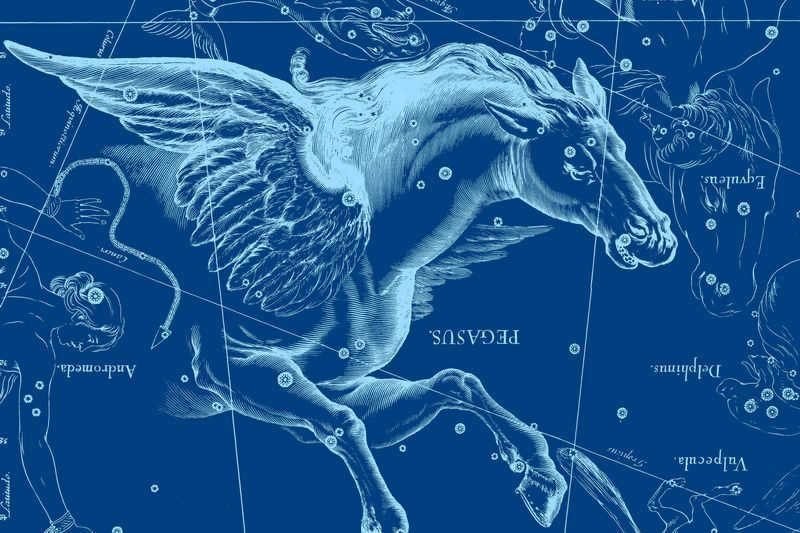
Legend has it that the god Poseidon bestowed Pegasus upon his son Bellerophonte, who had aspirations of soaring through the heavens on the majestic creature. Another account suggests that Bellerophontes himself tamed the horse and embarked on a series of extraordinary exploits before ultimately engaging in battle with the Chimera. Sadly, during their airborne escapades, Bellerophont fell to the earth, and Pegasus was subsequently gifted to Zeus. In gratitude, the horse faithfully transported thunder and lightning from Hephaestus to Zeus atop Mount Olympus. As a reward for its loyal service, Pegasus was immortalized in the night sky as a constellation.
The celestial formation Pegasus visible in the atmospheric expanse
Pegasus, the majestic formation of stars, can be observed in the vast Russian sky from the month of July through December. This awe-inspiring constellation belongs to the realm of autumnal constellations, reaching its zenith above the horizon during the months of September and October, when it is most prominently visible. Initially appearing in the eastern part of the sky at the onset of the night, Pegasus gradually transitions towards the southern region before descending beyond the western horizon.

Spotting the Pegasus constellation in the night sky during September is a simple task – its nearly rectangular shape is easily discernible, especially considering the absence of any particularly bright stars in this region of the celestial sphere. By looking towards the east in the months of September and October, approximately halfway to the zenith, the prominent Great Square of Pegasus becomes immediately apparent. The star situated in the upper left corner belongs to the Andromeda constellation and is known as Alpheratz – extending to the left from this star is a gently curved line of stars that form this constellation. Consequently, the Square of Pegasus possesses a kind of handle on its left side.
Stars in the Pegasus Constellation
The Pegasus constellation is home to numerous stars, although even the most luminous ones have a magnitude exceeding 2m. Interestingly, Pegasus does not have a delta star, as it was previously designated as Alferac, a star belonging to the Andromeda constellation.
Now, let’s examine the most prominent stars within the Pegasus constellation, which form part of the Big Square. As we recall, there are only three of them.
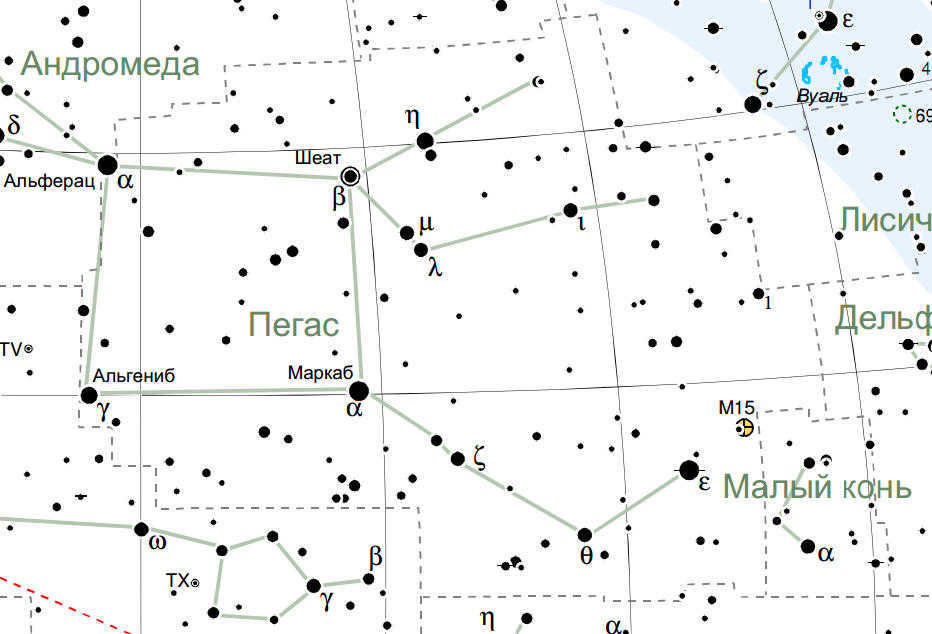
Incidentally, the constellation Pegasus offers a unique opportunity to test the acuity of your vision. On a moonless night, individuals with exceptional eyesight can discern stars as faint as 6m in magnitude. If your vision is truly exceptional, you should be able to spot 13 individual stars within the confines of the Big Square of Pegasus. However, if you are unable to see that many stars, it is an indication that your eyesight is less than perfect, and the fewer stars you can perceive within the constellation, the more compromised your vision is.
The beginning of Pegasus is marked by Markab
Despite being labeled as the alpha star, Markab is actually the third brightest star in the Pegasus constellation. It can be found in the lower right corner of the Square of Pegasus, with a brightness of 2.49m.
Markab is classified as a B9 III giant star, which is five times larger than the Sun. It is nearing the end of its hydrogen fuel and will soon transition to burning helium. Eventually, it will evolve into a red giant and then a white dwarf. Our Sun is expected to follow a similar path in billions of years.
Markab is relatively close to us, located approximately 140 light years away. The light we currently see from this star began its journey in 1879, a time when Stalin was born, British colonists were engaged in conflicts with the Zulus in Africa, and Edison was experimenting with his first light bulb.
The Sheath is the beta star of Pegasus
This celestial object is also an enormous giant, but it stands out with its red hue and has a surface temperature of 3700 K. In terms of size, the Sheath is nearly 100 times larger than our Sun. Moreover, it is categorized as an irregular variable star, meaning its luminosity fluctuates between +2.31 and +2.74m. It is believed that this star undergoes pulsations, and it is surrounded by a gas envelope formed from the material it is shedding.
The Sheath can be found in the upper right corner of the Square of Pegasus. There is a possibility that it is a binary star system, as there is another star located at a distance of 242 arc seconds, potentially serving as its companion.
Pegasus’ gamma is Algenibus.
Algenib is a subgiant star, approximately 4.5 times larger than the Sun. It belongs to the pulsating β Cepheus type stars, but it should not be confused with the δ Cepheus type stars, which are a different type of pulsating variable stars. The luminosity of Algenib varies between +2.78 and +2.89m, and it has a relatively short period of only 3.6 hours. Interestingly, Algenib is also a double star, with a second component located 0.15 astronomical units away from the main star. This second component completes a full orbit around Algenib in approximately 6.83 days.
Algenib can be found in the lower left corner of the Square of Pegasus.
Algenib is situated at a remarkable distance of 335 light-years. As you gaze upon this celestial body, the light that departed from it approximately in 1684 reaches your eyes. It was an era when Peter the Great was just commencing his reign in Russia, Europe was forging alliances to counter the expanding Ottoman Empire, and Robinson Crusoe had already spent 26 years on his secluded island with 2 more years yet to come.
Galaxies in the constellation of Pegasus.
There are numerous galaxies present in the constellation of Pegasus that can be observed using a telescope. However, it is important to note that a telescope with a significantly large aperture is necessary in order to successfully view these galaxies. It is highly unlikely that anything can be seen with a small aperture, unless the conditions are absolutely ideal with a dark night sky and clear air. The minimum aperture size that one can attempt to use for observing galaxies in Pegasus is 4 inches, but it is recommended to have a telescope with 6-8 inches or even larger for better results.
Stephan’s Quintet
Stephan’s Quintet is a well-known cluster of five galaxies located at an average distance of 280 million light years from Earth. Within this group, four galaxies are intricately connected, while the fifth member, NGC 7320, appears significantly brighter and is situated 40 million light-years away. Interestingly, NGC 7320 also happens to align perfectly with the other four galaxies in the cluster.
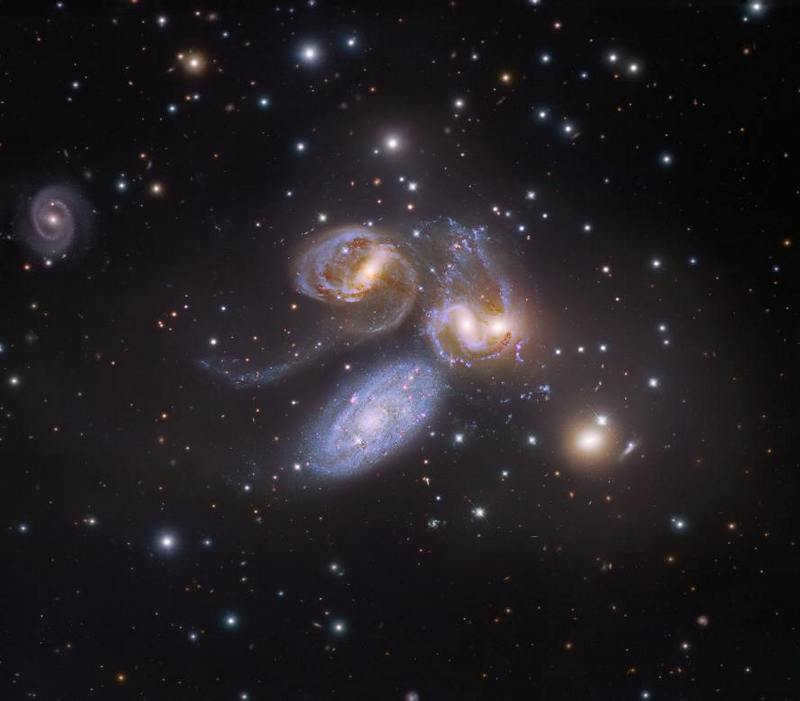
The Stephan Quintet is a collection of five galaxies located in the constellation Pegasus. However, the galaxy on the left in the image below, known as NGC 7320, is much closer to us than the others. This galaxy is actively producing new stars, as indicated by the blue and pink areas. Additionally, the interaction between the galaxies has resulted in the formation of gaseous tidal tails, where young stars are also forming.
Observing the Stephan quintet can be challenging due to its low brightness. Even the brightest galaxy, NGC 7320, has a magnitude of 12.5, requiring a 10-inch telescope for a confident search. However, some amateur astronomers have managed to observe this group with smaller telescopes under excellent conditions.
The four galaxies in the Stephan Quintet are gravitationally bound and undergo mutual exchange of matter, leading to deformations. The study of these interactions is highly interesting.
NGC 7814.
NGC 7814 is an edge-on spiral galaxy that can be observed in the night sky. It can be found approximately 2 degrees away from the gamma star of the Pegasus constellation. This fascinating galaxy is located at a distance of about 40 million light years from Earth. With a brightness of 10.8m, it is possible to spot NGC 7814 using a telescope with an aperture of 100-150mm, although a larger aperture would provide better results.
Discover the precise location of NGC 7814 in the night sky.
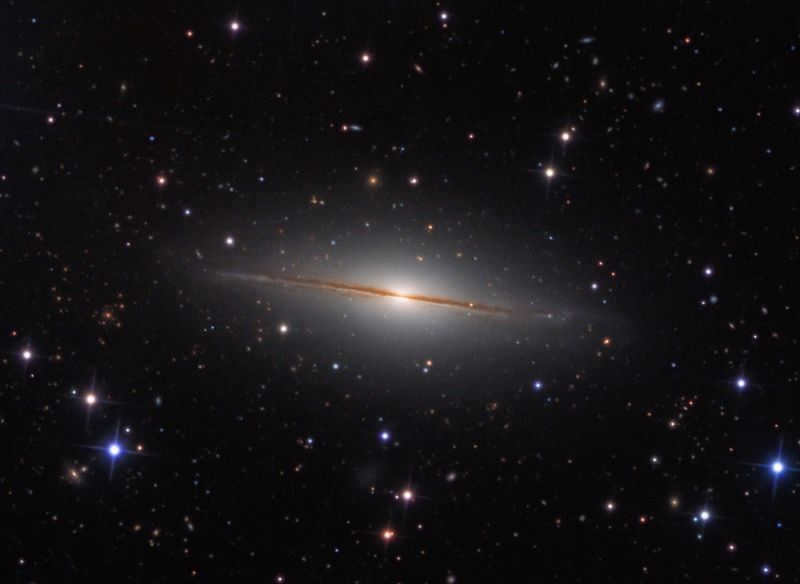
The Nebulae and Clusters in Pegasus Constellation
In Pegasus constellation, there exists a relatively bright globular cluster known as M 15. It has a magnitude of 6.2m, and under optimal conditions and excellent eyesight, it can be observed with the naked eye. The task of locating M 15 becomes even easier when using binoculars.
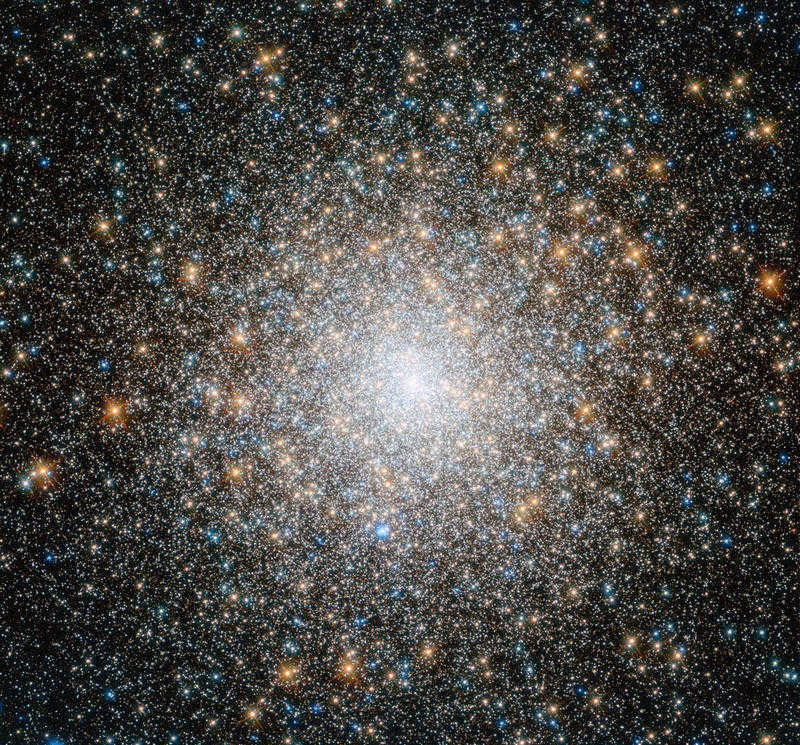
The M15 globular star cluster can be found in the Pegasus constellation.
This particular star cluster is located 33,600 light years away from our planet and is composed of over 100,000 stars. Its luminosity is 360,000 times greater than that of the Sun. Considered one of the most densely packed globular clusters in our galaxy, it is believed to contain a black hole at its core. When observed through a telescope, one can easily observe how the star density decreases towards the cluster’s outer edges.
Interestingly, this cluster contains a planetary nebula with a magnitude of 15.5m, although it can only be detected using a powerful telescope equipped with filters. This nebula is referred to as Pea 1, as it was the first nebula to be discovered within this star cluster.
It first emerged during the second century, all thanks to Ptolemy. The designation Pegasus was bestowed upon this constellation in honor of the mythical winged horse of ancient Greece. Notable celestial objects that can be observed within the vicinity of Pegasus include the asterism known as the Great Square Pegasus, Messier 15 (NGC 7078), Stephanus Quintet, Einstein’s Cross (a quasar whose light is gravitationally lensed), and the spiral galaxy NGC 7742, which lacks a connecting bridge.
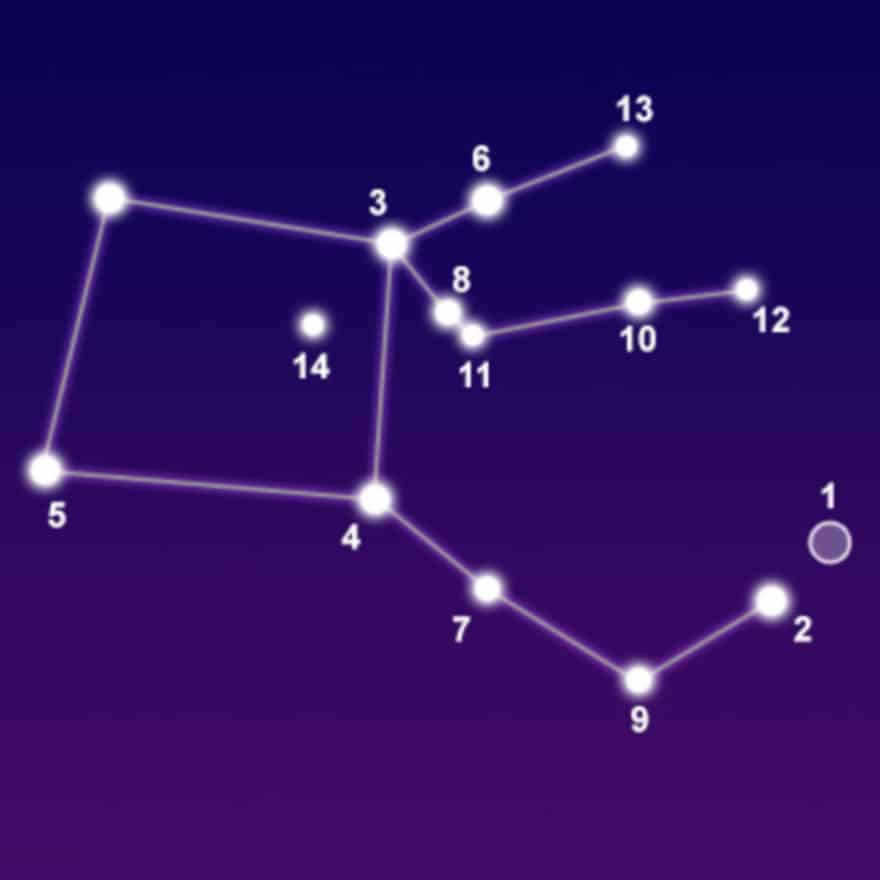
Facts, Location, and Map
Pegasus, a constellation covering an area of 1121 square degrees, is ranked as the 7th largest constellation in terms of size. It occupies the fourth quadrant in the northern hemisphere (NQ4) and can be observed at latitudes ranging from +90° to -60°. Pegasus is adjacent to Andromeda, Aquarius, Swan, Dolphin, Foxy, Pisces, Lizard, and Lesser Horse.
Pegasus is home to the Messier object – Messier 15, as well as 9 stars hosting planets. The brightest star in Pegasus is Epsilon Pegasus, with an apparent visual magnitude of 2.399. Additionally, Pegasus is known for the meteor stream known as the July Pegasids. It belongs to the Perseus group, which also includes Andromeda, Cassiopeia, Cetus, Lizard, Perseus, Cepheus, Triangle, and Ascendant. To explore the constellation Pegasus further, refer to the star map diagram.
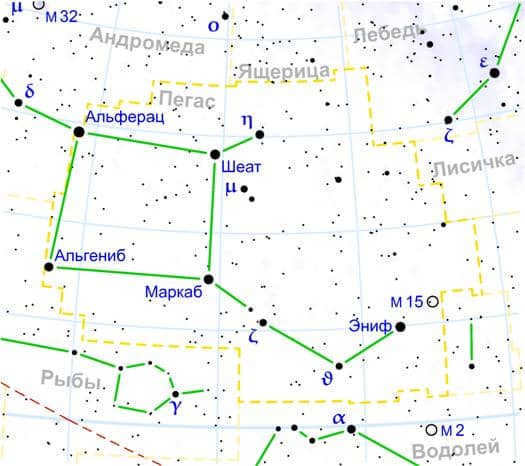
Legend
In the ancient legends, Pegasus was a majestic horse with magnificent wings that emerged from the severed neck of the fearsome Medusa Gorgon. Medusa was once a stunningly beautiful woman, until the wrathful goddess Athena transformed her into a monstrous creature after she was violated by Poseidon within the sacred confines of Athena’s temple. Medusa’s golden locks transformed into a writhing mass of serpents, and her visage became so repulsive that anyone who dared gaze upon her was instantly petrified, turned into a lifeless statue of stone.
King Polydectes served as the foster uncle to the valiant warrior Perseus. It was King Polydectes who cunningly dispatched Perseus to face the formidable Medusa. The motive behind this treacherous act was the king’s infatuation with Danaë, Perseus’ mother. The king sought to eliminate any obstacles that stood in the way of his desires.
When Medusa was slain by Perseus, two offspring sprang forth from her severed neck: Pegasus and Chrysaor, both children of Poseidon. In Greek, the name “Pegasus” translates to “springs” or “water,” while “Chrysaor” signifies “golden sword.” Following his birth, Pegasus embarked on a journey to Mount Helicon, where he forged lasting bonds with the muses dwelling there. One fateful day, he struck the earth with his hoof, giving rise to a new spring that came to be known as Hippocrene – “the fountain of the horse.”
The most well-known legend is associated with the hero Bellerophontes, who was sent by Jobat to battle Chimera. This monstrous creature breathed fire and brought constant turmoil to the kingdom. Bellerophontes managed to capture the Pegasus by obtaining the golden bridle. He then tamed the majestic creature and used it to defeat the Chimera from above, using arrows and a spear. Bellerophontes continued to showcase his remarkable skills while riding on the Pegasus. One day, he set his sights on reaching Olympus and joining the gods. However, during his journey, he fell off the back of the winged horse and was forced to return to Earth.
Meanwhile, Pegasus successfully made its way to Olympus. Zeus, the ruler of the gods, saw potential in the magnificent creature and decided to utilize it as a means of transporting thunder and lightning. Eventually, Zeus elevated Pegasus to the heavens, transforming it into a constellation. When observed, only the upper half of the constellation can be seen, yet it still occupies a significant portion of the night sky.
Discover in depth the brilliant stars of the Pegasus constellation located in the southern hemisphere, complete with comprehensive descriptions and characterizations.
The iconic Great Square Pegasus asterism serves as the central core of the constellation. This prominent pattern consists of three luminous stars found in both Pegasus and Alpha Andromeda, which were historically believed to belong to both constellations.
During the 17th century, Johann Bayer bestowed upon the star a dual designation, Alpha Andromeda and Delta Pegasus. Over time, the latter name has faded into obscurity, and the star is now exclusively recognized as Alpha Andromeda. Other notable stars within Pegasus include Alpha, Beta, and Gamma.
Markab (Alpha Pegasus) is a massive star (B9 III) with a visual magnitude of 2.48 and a distance of 133 light-years. It is the third brightest star in the constellation. Markab has a radius that is five times larger than the sun. The star’s traditional name, Markab, is derived from the Arabic word meaning “horse’s saddle”.
Sheat (Beta Pegasus) is a red star that is transitioning from a subgiant to a giant phase (M2.3 II-III). It has an apparent magnitude of 2.42, making it 1,500 times brighter than the Sun. Sheat is located at a distance of 196 light-years and is the second brightest star in the constellation.
Sheat is classified as a semiregular variable star with a period of 43.3 days. Its brightness fluctuates between 2.31 and 2.74. The star is also experiencing mass loss, resulting in the formation of a gas and dust envelope that is expanding with a radius 3,500 times larger than the sun.
The star’s name, Sheat, is derived from the Arabic word Al Sā’id, which means “shoulder”.
Algenib, also known as Gamma Pegasus, is classified as a subgiant star (B2 IV) with a visual magnitude of 2.84. Located at a distance of 390 light-years, it can be found at the lower left corner of the Grand Square of Pegasus. This star is known for its variability as a Beta Cepheus, meaning its brightness fluctuates due to surface ripples. Its radial pulsation period is approximately 0.15175 days, during which its brightness ranges from 2.78 to 2.89.
Algenib is an incredibly massive star, weighing in at 9 times the mass of the Sun. It also surpasses the Sun in terms of size, with a radius that is 5 times larger. Additionally, Algenib shines much brighter than our Sun, boasting a brightness that is 5840 times greater.
Enif, also known as Epsilon Pegasus, is a massive orange supergiant star (K2 Ib) located in the constellation Pegasus. It has a visual magnitude of 2.399, making it the brightest star in the constellation, and is located approximately 690 light-years away from Earth. Enif is 12 times more massive than the Sun, 185 times larger in radius, and 5000 times brighter.
Enif is classified as a slow LC type irregular variable star, meaning its brightness fluctuates irregularly over time. Its magnitude ranges from 0.7 to 3.5. The spectrum of Enif shows an overabundance of barium and strontium elements. The star has a velocity of 21.6 kilometers per second.
The name “Enif” is derived from Arabic and means “nose,” representing the face of the mythical winged horse Pegasus.
Zeta Pegasus is another star in the constellation Pegasus. It is a main-sequence star of spectral type B8 V. Zeta Pegasus has an apparent magnitude of 3.414 and is located approximately 204 light-years away from Earth. It has a radius four times that of the Sun.
Zeta Pegasus is classified as a slow pulsating B star, meaning it exhibits slight variations in its luminosity over time. It has a period of 22.952 ± 0.804 hours and completes 1.04566 cycles per day.
The rotational velocity of the star is between 140 and 210 km/s. The star is accompanied by two visual satellites, one with a magnitude of 11.6 (at a distance of 68 arc seconds) and the other with a magnitude of 11 (at a distance of 177 arc seconds).
The traditional name for this star is “Homam,” which means “man of high spirit.”
Matar, also known as Eta Pegasus, is a double star with a visual magnitude of 2.95 (making it the fifth brightest in the constellation) and is located 167 light-years away.
This double star system consists of two stars with a period of 813 days. The brighter star is a giant (G2 II), which is four times more massive and 247 times brighter than the Sun. The companion star is a main-sequence star (F0 V).
The name Matar comes from the Arabic phrase Al Sa’d al Maṭar, which means “the lucky rain star.”
Theta Pegasus is a star (A2 Vp) with a visual magnitude of 3.53 and is located 67 light-years away. It is 25 times brighter than the Sun and has a radius 2.6 times larger than the Sun.
Mu Pegasus is a yellow giant star (G8 III) with a visual magnitude of 3.514 and a distance of 106.1 light years. It has a radius 10 times larger than the Sun and is 2.7 times more massive. It is also known by its traditional Arabic name, “Sadalbari,” which means “splendid lucky star.”
51 Pegasus is a main-sequence star (G5V) with an apparent magnitude of 5.49 and a distance of 50.9 light-years. It was the first Sun-like star to be discovered with a planet in orbit. It has a radius 24% larger than the Sun and is 11% larger in mass. It is estimated to be between 6.1 and 8.1 billion years old.
On October 6, 1995, astronomers discovered an exoplanet orbiting 51 Pegasus. This exoplanet, named Bellerophon, has half the mass of Jupiter.
The IK Pegasus B is the companion star, which is a white dwarf and is the closest candidate for a supernova. It is predicted to explode as a Type Ia supernova once the brighter star in the system evolves into a red giant and increases its radius, transferring matter to the white dwarf from its expanded gas envelope.
Celestial objects
Messier 15 (M15, NGC 7078) is a globular cluster located at a distance of 33600 light-years with an apparent visual magnitude of 6.2. It has a size of 18 angular minutes.
With an absolute magnitude of -9.2, M15 is 360000 times brighter than the Sun. The brightest stars within the cluster have a magnitude of 12.6. It is one of the oldest clusters, with an age of 12 billion years, and contains over 100000 stars, including various variables, pulsars, and the double neutron star M15 C.
The year 1746 marked the discovery of this celestial body by Jean Dominique Maraldi, and it was promptly included in Messier’s catalog.
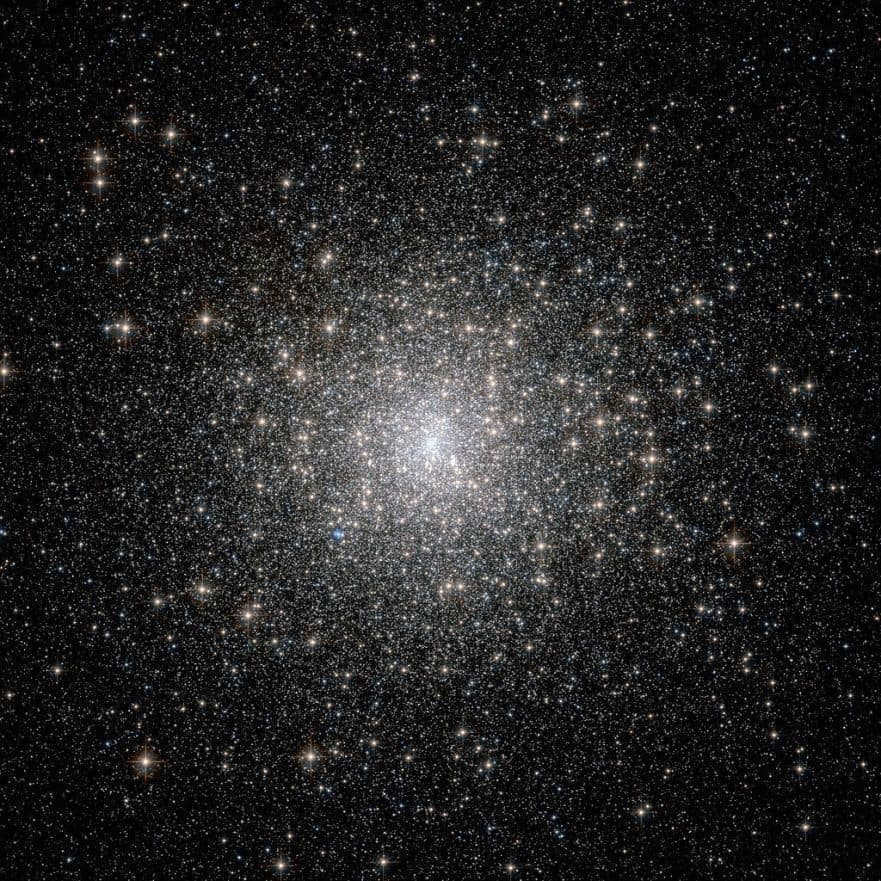

Messier 15 is a highly compact globular cluster, with the main bulk of its mass concentrated in the core. Astronomers speculate that this specific group of stars underwent a core collapse, as gravitational forces between individual stars led to the migration of numerous members towards the central region.
The Intervening Pea 1 is a planetary nebula that possesses an apparent magnitude of 15.5. It was initially discovered in 1928 and represents the first nebula ever found within this cluster.
M15 also features two sources of intense X-ray emission, known as Messier 15 X-1 and Messier 15 X-2.
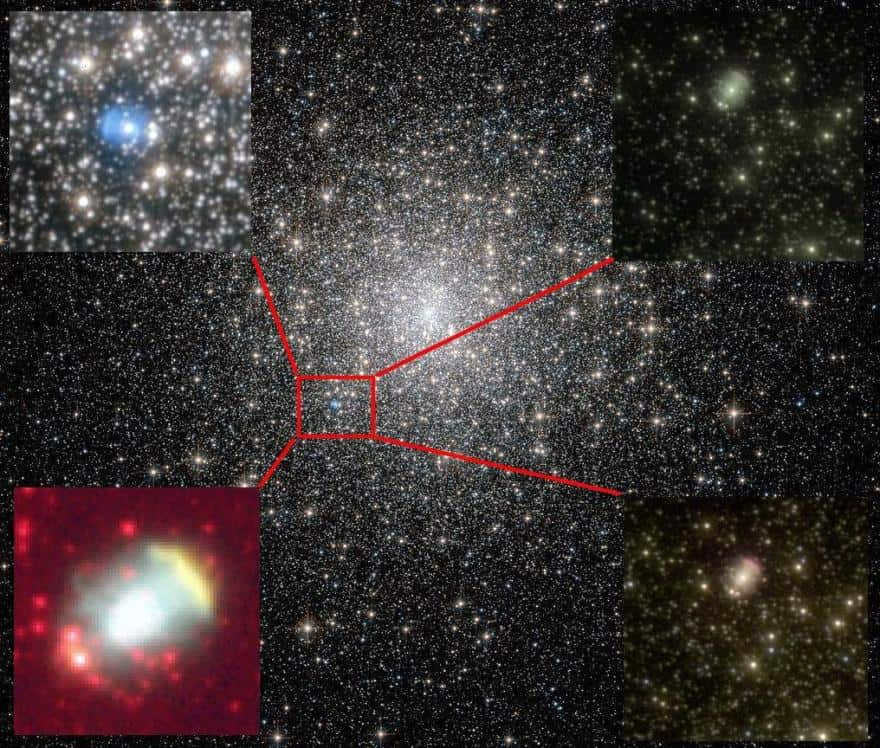
The Stephan Quintet, also known as HCG 92 or Arp 319, was discovered in 1877 by the French astronomer Edouard Stephan. This group consists of five galaxies, specifically NGC 7317-7320, and they are situated approximately 280 million light-years away.
The most luminous galaxy in the Stephan Quintet is NGC 7320, which is located 40 million light-years from Earth. The other four galaxies are part of the physical association known as Hickson’s Compact Group 92 and are expected to merge in the future.
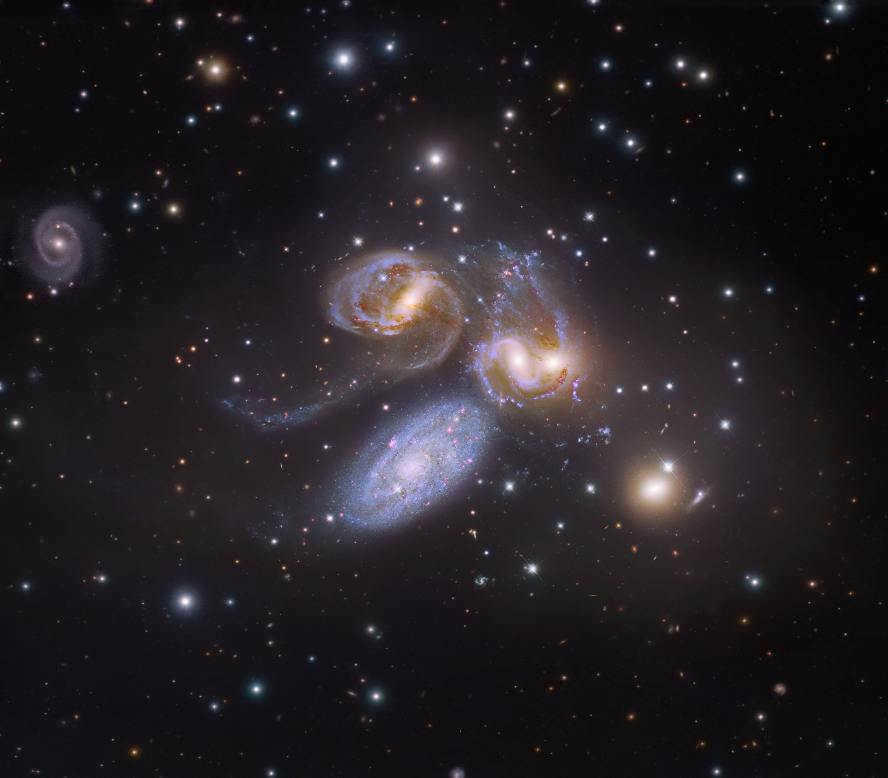
The Stephan Quintet, which was discovered 130 years ago and is located approximately 280 million light-years away, is a remarkable collection of galaxies. This presents a unique opportunity to witness the evolution of a group of galaxies, starting from a system dominated by spiral galaxies with faint X-rays, to a more advanced stage featuring ellipticals and bright X-rays.
NGC 7320, a spiral galaxy with a visual magnitude of 13.2 and situated 39 million light-years away, occupies a diameter of 2.2 arc minutes. Although it is not officially part of the Hickson Compact Group, it is positioned along the same line of sight.
This galaxy contains sizable H II regions, which are hotbeds of intense star formation.
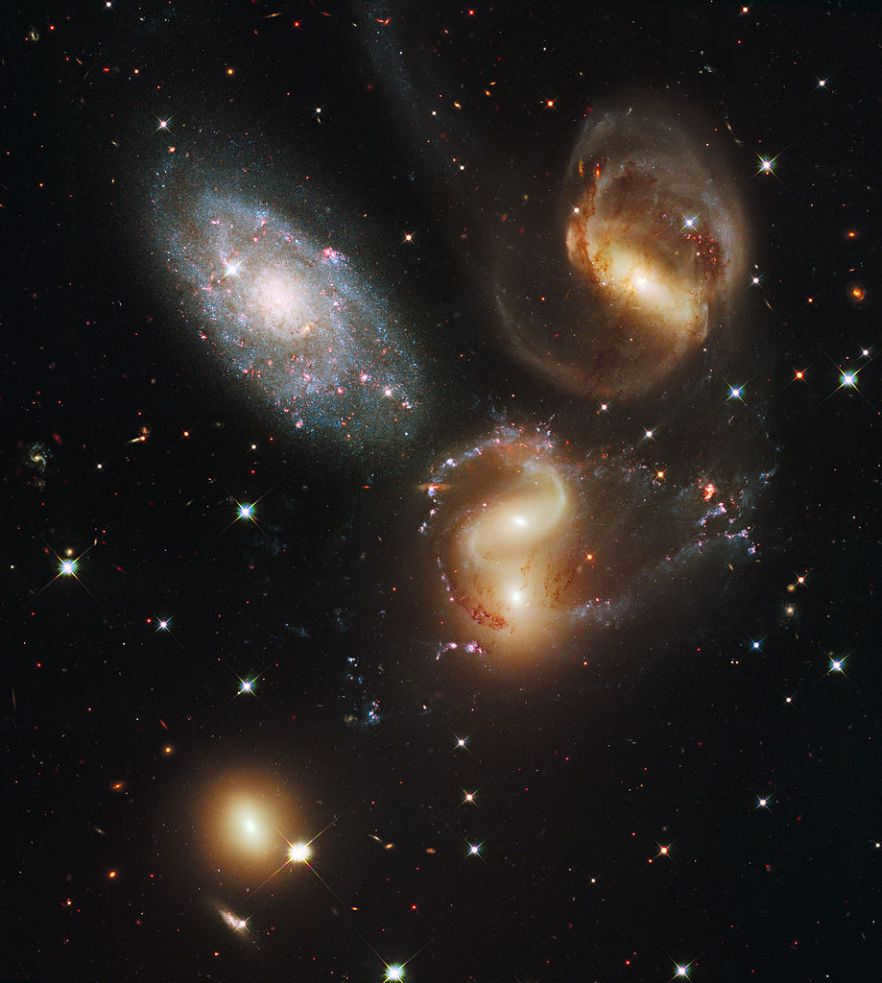
The next galaxy contains two nuclei, but it appears that NGC 7318A and NGC 7318B are in front of us. The surrounding galaxies consist of young, vibrant blue star clusters and glowing pink clouds of hydrogen where new stars are being born. These galaxies are less than 10 million years old, so they haven’t had enough time to disperse their own clouds. On the right side, you can observe an area of intergalactic space where star clusters are forming.
NGC 7317, located in the bottom left, is an elliptical galaxy that is less affected by interactions.
In stark contrast, the dwarf galaxy NGC 7320 can be seen in the upper left corner. The disk of this galaxy showcases bursts of star formation, visible as blue and pink dots.
NGC 7317 is an E4-type elliptical galaxy with a magnitude of 14.57. It has a size of 0.4′ x 4′.
NGC 7318 is a pair of galaxies that are colliding with each other, known as NGC 7318a and NGC 7318b. These galaxies are located at a distance of 300 million light-years away. The magnitude of their brightness, as seen from Earth, is measured to be 14.4 and 13.9 respectively.
NGC 7319, on the other hand, is a spiral galaxy that is situated at a distance of 360 million light-years away. Its apparent magnitude is 14.1. Interestingly, in January 2005, scientists discovered a quasar at the center of NGC 7319, which is a billion light-years away from us.
The discovery of this quasar was significant because its light spectrum exhibited a high redshift, indicating that it is one of the fastest objects in the universe that is located at such a great distance. However, it is worth noting that many other quasars have been found to be closely associated with galaxies that are much closer to us than this particular one.
Lastly, NGC 7315 is an elliptical galaxy with a visual magnitude of 13.9. It is relatively small in size, measuring about 1.2′ x 1.2′. In 2007, astronomers made an exciting discovery in NGC 7315 – a Type Ia supernova known as SN 2007B.
NGC 7742, a spiral galaxy, lacks a connection and has a visual magnitude of 12.35. It is situated 72.4 million light-years away and is considered to be on the “front” side from our perspective. Despite possessing a ring, it does not have a bar, which is typically responsible for forming such a ring structure.
The ring formation may have occurred due to a merger with a gas-rich dwarf galaxy. Noteworthy features include the exceptionally bright central region and the presence of gas rotating in the opposite direction.
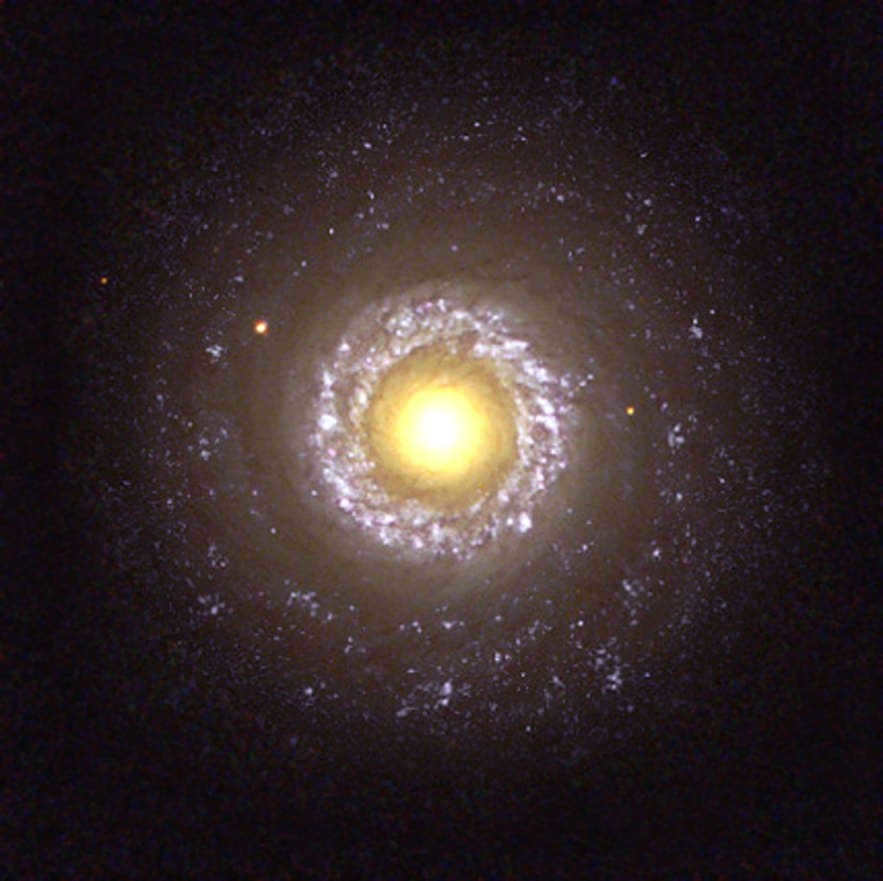
NGC 7331 (Caldwell 30) is a spiral galaxy that has a visual magnitude of 10.4 and is located about 40 million light-years away. It bears a resemblance to our own Milky Way galaxy. The galaxy was first observed by William Herschel in the year 1784. NGC 7331 is the brightest galaxy in the NGC 7331 group. Interestingly, the bulge of NGC 7331 rotates in the opposite direction to the rest of its disk.
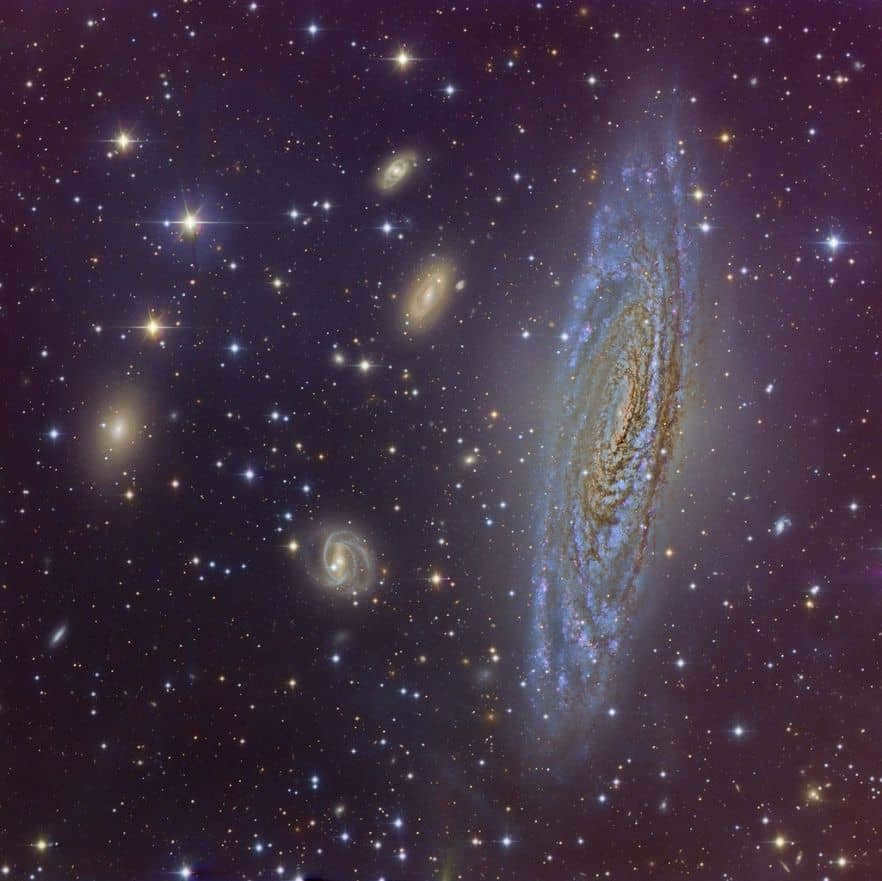
NGC 7217 is a spiral galaxy that lacks a connection with an apparent magnitude of 11.0. Situated 50 million light-years away and measuring 3.9′ x 3.2′, it possesses multiple stellar rings. The most conspicuous of these is the outer ring, which hosts the majority of the activity and star formation.
An interesting feature is the presence of stars rotating in opposite directions, resulting in the formation of two distinct stellar populations: a young and metal-poor group in the outermost regions, and stars of intermediate age in the inner regions.
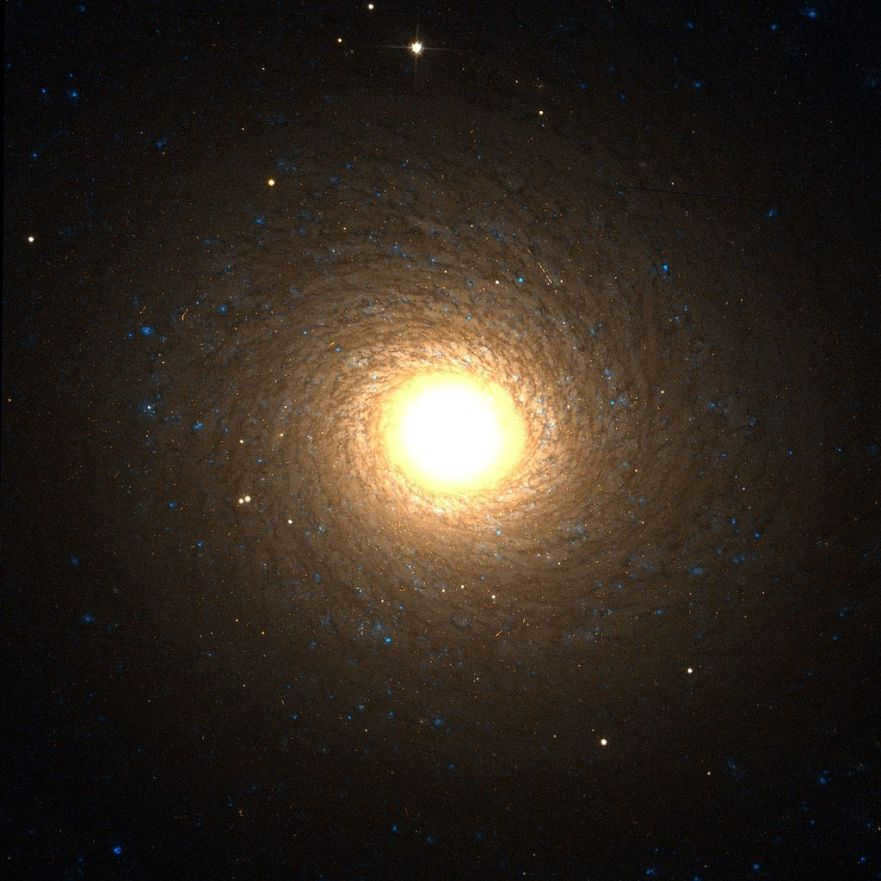
NGC 7673 is an unsettled spiral galaxy with a brightness level of 13.2 and a distance of 150 million light-years. It measures 1.3′ x 1.2′ in dimensions. There has been a recent surge in stellar production within this galaxy.
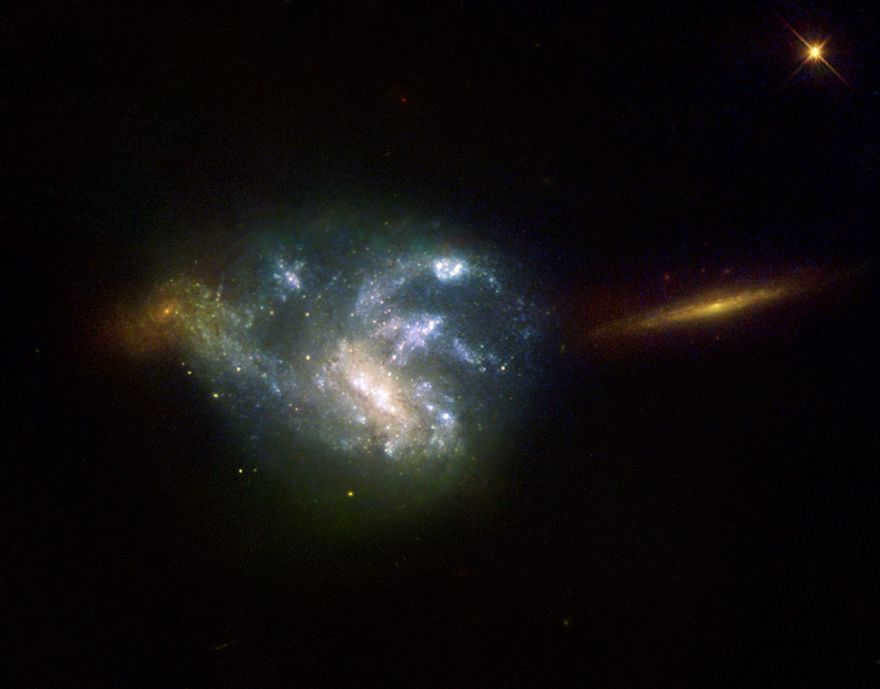
NGC 23 is a spiral galaxy that shines brightly with a visual magnitude of 11.9 and is located about 193 million light-years away. Its size measures approximately 1.9’x1.4′.
Einstein’s Cross (Q2237 + 030) is a quasar that is gravitationally lensed and positioned directly behind the Huhra Lens, a galaxy named after the American astronomer John Huhra. The phenomenon of gravitational lensing is one of the effects explained by Albert Einstein’s general theory of relativity. Einstein realized that gravity can cause the bending of light.
The lensing effect occurs because of the distortion in space-time caused by massive objects such as black holes or galactic clusters. This distortion allows light rays from a background source to be bent.
An Einstein Cross is the name given to a quasar that is observed through gravitational lensing. This particular quasar is located 8 billion light years away from the Sun, while the Lens of Huhra is situated 400 million light years away.
The precise coordinates of the quasar are 22h40m30.3s (right ascension), + 3° 21'30.3" (declination).
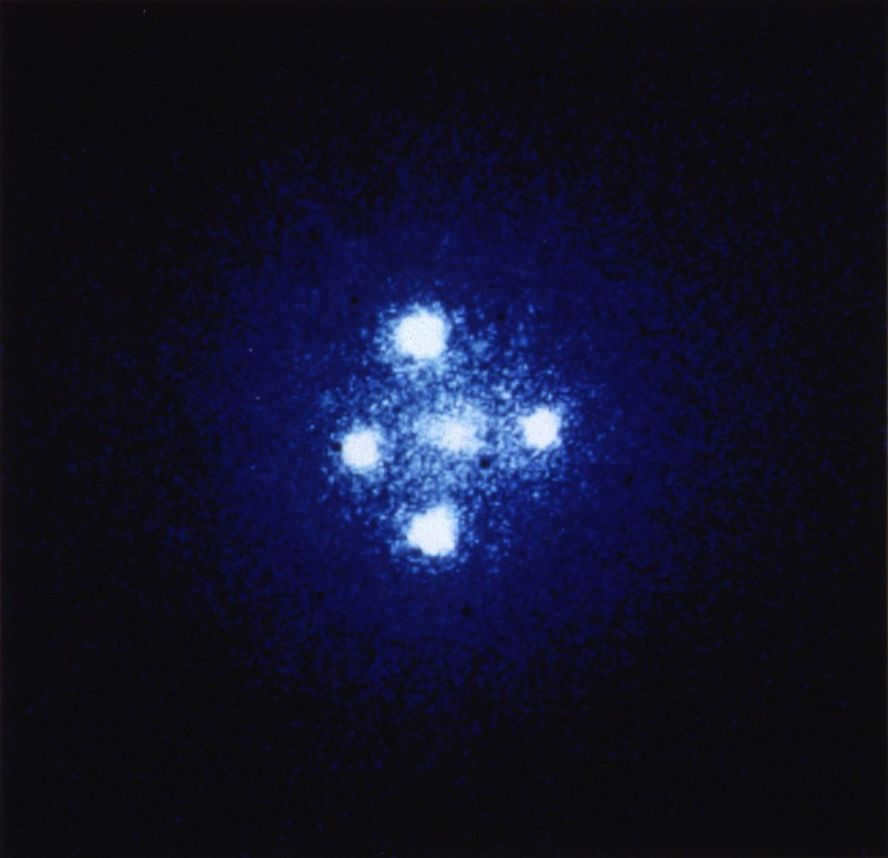

This image, taken by the gravitational lens G2237+0305 (Einstein’s Cross), offers an incredibly detailed view. It showcases four separate images of a quasar that is situated far away. These images have been amplified significantly thanks to the gravitational lensing phenomenon caused by a nearby galaxy. Notably, the angular separation between the upper and lower images is precisely 1.6 angular seconds.
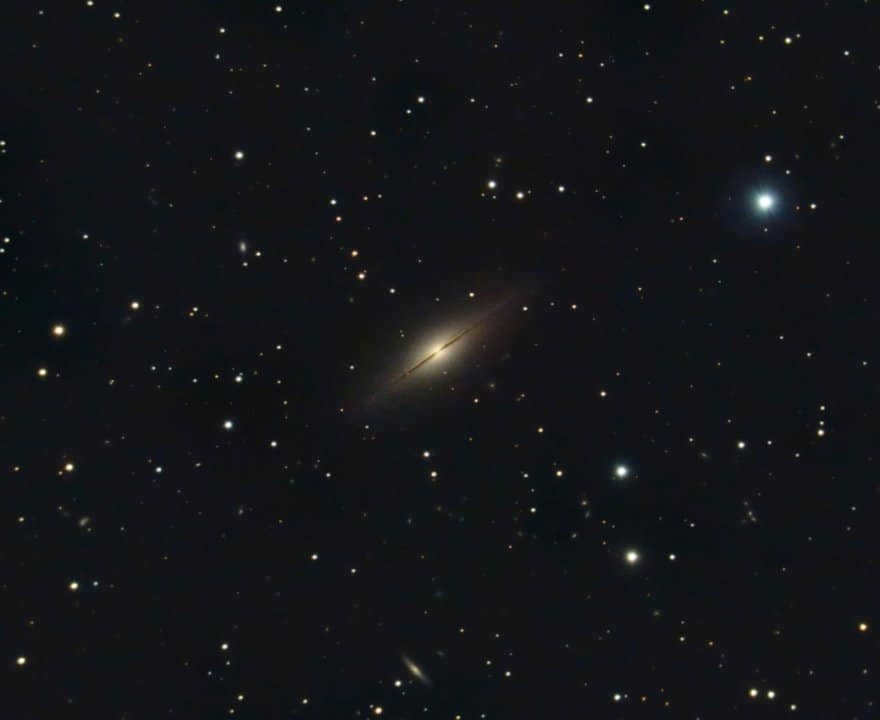
NGC 7479 (also known as Caldwell 44) is an awe-inspiring spiral galaxy that features a distinctive junction. With an apparent visual magnitude of 11.6 and located at a staggering distance of 105 million light-years, this celestial marvel never fails to captivate astronomers and stargazers alike. Not only is NGC 7479 a Seyfert galaxy, but it also boasts active star formation within its core and along its mesmerizing spiral arms. Renowned astronomer William Herschel first laid eyes on this cosmic wonder in the year 1784. Throughout its existence, NGC 7479 has witnessed the explosive demise of two supernovae, namely SN 1990U and SN 2009jf.
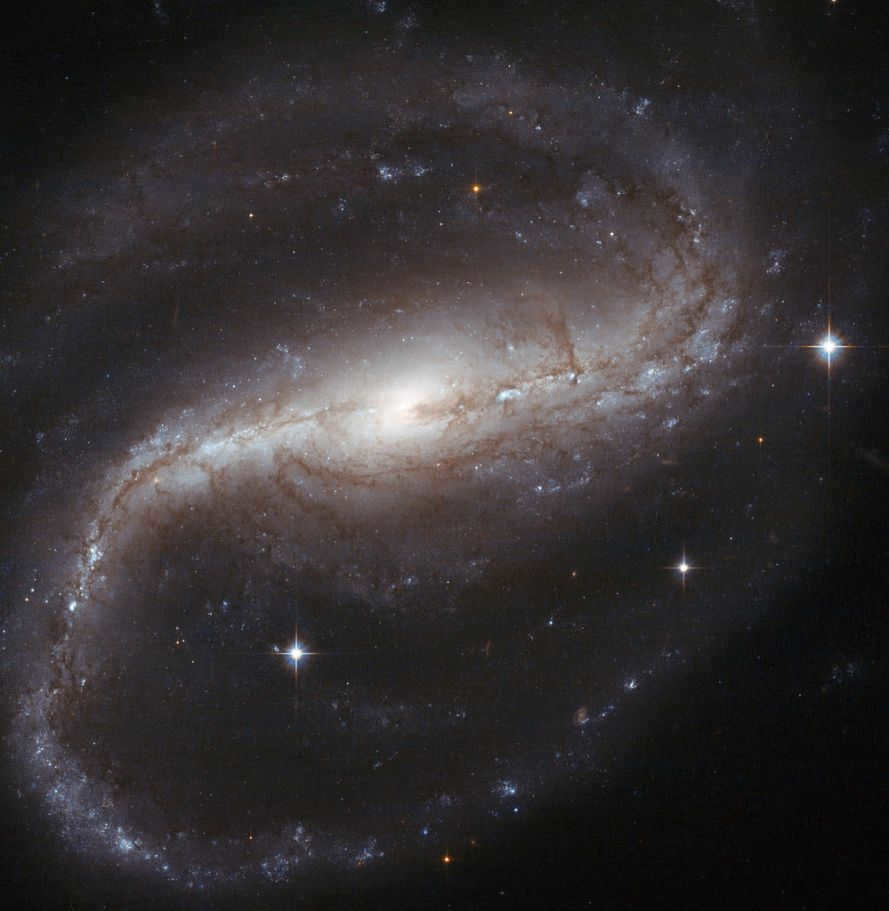
NGC 1 is an example of a spiral galaxy, with a visual magnitude of 13.65 and a distance of 206 million light years. It spans an impressive diameter of 90,000 light years.
This galaxy holds a special place in astronomical history, as it was the first deep-sky object to be recorded in the New General Catalog (NGC). When the catalog was initially compiled, objects were organized based on their direct ascension, and NGC 1 happened to have the lowest value at that time (00h07m15.86s). However, over the years, the coordinates have undergone shifts.
NGC 7725 and NGC 7753 make up a unique galactic pair.
NGC 7753 is a spiral galaxy that features a junction, while NGC 7753 (satellite) is a lenticular galaxy that has become attached to NGC 7753, albeit in a shifted position.
These galaxies have visual magnitudes of 15.0 and 12.8, respectively, and are located approximately 272 million light-years away.
In January 2006, astronomers made an exciting discovery within NGC 7753 – the supernova SN200A.
If you want to delve deeper into the exploration of the Pegasus constellation in the southern hemisphere, you can make use of our extensive collection of photographs, as well as access 3D models and an online telescope. To aid in your personal investigation, a star map will prove to be an invaluable tool.

The constellation of Pegasus can be found in the northern hemisphere and is situated southwest of Andromeda. Covering an area of 1,120 square degrees, Pegasus is home to a total of 166 visible stars.
This constellation has been recognized since ancient times and is even listed as “Horse” in Ptolemy’s catalog of the night sky.
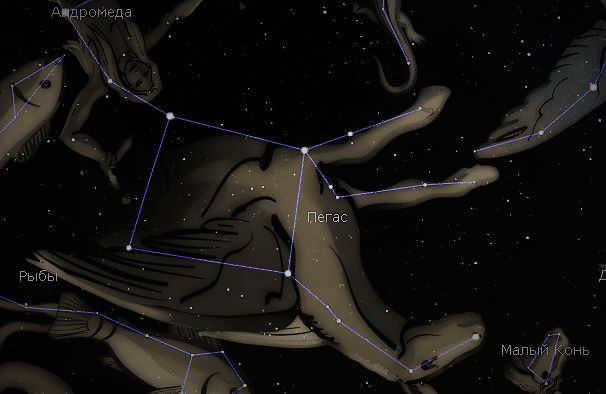
The celestial objects of Pegasus
Interestingly, Pegasus does not contain a star named delta. This is because it was previously recognized as Alferacus, but later reclassified as part of the neighboring constellation Andromeda.
Alpha Marqab is a massive blue star, ranking as the third brightest in Pegasus. Scientists predict that it will eventually evolve into a red giant. It is noteworthy that Alpha Marqab is also a member of the Big Square asterism.
Beta-Sheath is already a red giant star and is classified as a semiregular variable. It is worth mentioning that Sheat pulsates and is surrounded by a gas shell. Beta-Sheath is also part of the Big Square asterism.
Gamma-Algenib is a blue subgiant star that belongs to the variable class. It has a companion star and, like the previously mentioned stars, forms an asterism in Pegasus.
Epsilon-Enif is a subgiant star that has an orange color. It is widely recognized as the most brilliant star in its specific region of the sky.
Zeta Homam is a star that exhibits a slow pulsating behavior. Interestingly, this star is accompanied by two other celestial bodies.
Eta-Matar is a star system consisting of two individual stars that are gravitationally bound together.
In addition to the aforementioned stars, it is noteworthy to mention Helvetios. This particular celestial object closely resembles our own sun in terms of its characteristics. What makes it even more fascinating is the presence of a planet that orbits around Helvetios, rather than a natural satellite.
Furthermore, a total of eight additional stars within this constellation have been discovered to have their own planetary systems.
Asterism Big Square
As you may have noticed, the Asterism Big Square is situated within the constellation Pegasus. It is distinguished by three exceptionally luminous stars that come together to form its shape:
However, it is important to note that despite the name, this asterism actually consists of four stars. This is because it includes the star Alpheratz, which belongs to the constellation Andromeda, but is still considered part of the Asterism Big Square within the Pegasus region. Quite intriguing, don’t you think?
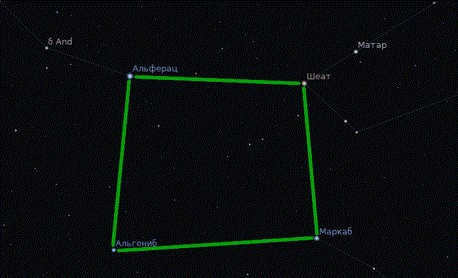
Other celestial objects
In reality, the Konya region houses numerous stunning celestial objects. Despite the diverse array of entities, each one is undeniably fascinating. Furthermore, they can be observed in the night sky using a telescope.
For instance, NGC 7331 is classified as a spiral galaxy.
NGC 7479 is also a spiral galaxy, but it possesses a bar and two arms.
By the way, there is a galaxy located in the constellation NGC 7742. It is a spiral galaxy with a ring structure.
Star 51 is the first star of its kind, similar to the Sun. It has an exoplanet of the hot Jupiter classification.
Astronomers have made an incredible discovery – they have found a black hole spinning at an astonishing speed. This finding is truly remarkable.
M 15 is a unique globular cluster that stands out due to its impressive collection of stars.
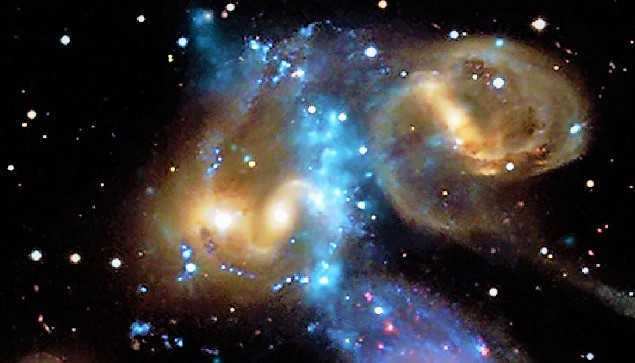
The legend of the Pegasus constellation.
According to ancient Greek mythology, Pegasus was the name of the horse owned by the god Zeus. This magnificent creature had large, white wings, earning it the title of the celestial horse. The myth states that Pegasus was born from the blood of Medusa, who was slain by Perseus. When her blood fell into the sea, Poseidon used it to create this extraordinary creature. Pegasus, therefore, holds the distinction of being considered the father of all horses according to the gods’ history.

Pegasus was greatly esteemed by the muses and demonstrated unwavering loyalty and devotion towards Zeus. In recognition of his remarkable qualities, he was bestowed with eternal life. Consequently, this exquisite creature transformed into the constellation that embellishes the autumn firmament.
Conditions for Observation
Pegasus is commonly associated with the autumn season. Specifically, in Russia, it is most visible from July to December.
However, during September and October, it is particularly prominent in the night sky. As a result, it is possible to spot the constellation without the aid of a telescope during this time. Nonetheless, using a telescope will provide a more detailed view of Pegasus and allow one to appreciate its majestic splendor.
Some individuals perceive the stars, while others perceive the emptiness in between.
Lois McMaster Budgold. The warrior’s apprentice
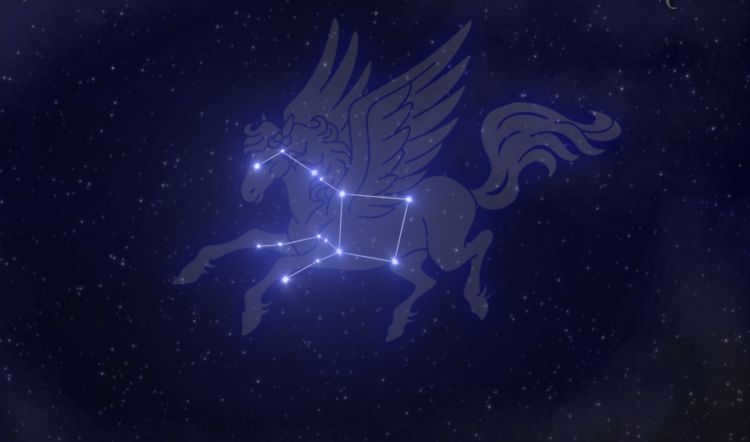
- Constellations
Pegasus is the name given to a constellation in the northern hemisphere of the night sky. This constellation is situated southwest of Andromeda and covers an area of 1120.8 square degrees. Pegasus contains 166 stars that can be seen without the aid of a telescope.
| Winged Horse | |
| Latin name | Pegasus (gen.: Pegasi). |
| Abbreviation | Peg |
| Symbol | Winged Horse |
| Direct Ascent | 21 h 03 m to 0 h 08 m |
| Declination | +1° 45' to +36° 00' |
| Area | 1121 sq. deg. (7th place) |
| Brightest stars (magnitude < 3 m ) | Enif (ε Peg) – 2.38m Sheat (β Peg) – 2.4-2.8m < Markab (α Peg) – 2.49m Algenib (γ Peg) – 2.83m Matar (η Peg) – 2.93m |
| Meteor streams | Pegasids |
| Neighboring constellations | Andromeda Lizard Swan Fox Dolphin Small Horse Aquarius Pisces |
| This constellation can be seen from latitudes ranging from +90° to -54°. The ideal time to observe it is in February. | |
History of Research
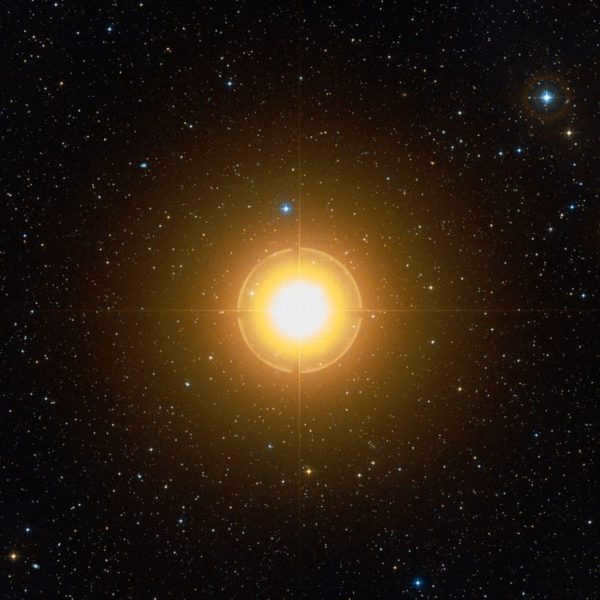
The constellation Pegasus is a vast equatorial constellation that contains more than one hundred and fifty stars that can be seen with the naked eye. It was first recorded in the 2nd century BC by Pseudo-Eratosthenes, an anonymous author of the ancient scientific poem Catasterisms. In Claudius Ptolemy’s star catalog “Almagest,” Pegasus is referred to as “Horse,” which is also the name given to this constellation by the Babylonians. The ancient Greeks referred to the constellation as “Big Horse,” a name that has been preserved by the Arabs and is still used today – Al-faras Al-azam.
It should be observed that originally situated in the top left corner of Alferats Square was a delta star of Pegasus, but in 1928, the International Astronomical Union decided to assign it to the constellation Andromeda.
The primary components of Pegasus are
Enif
Let’s commence by mentioning a few details about the main stars in the constellation. The most luminous among them is Enif, otherwise known as the epsilon of Pegasus. Despite being labeled with the fifth letter of the Greek alphabet, it has a stellar magnitude of 2.39m. Enif, which translates to “nose of the horse” in Arabic, is also called Os or Phom. This star is exceptional, primarily due to the fact that it is a supergiant.
Sheet
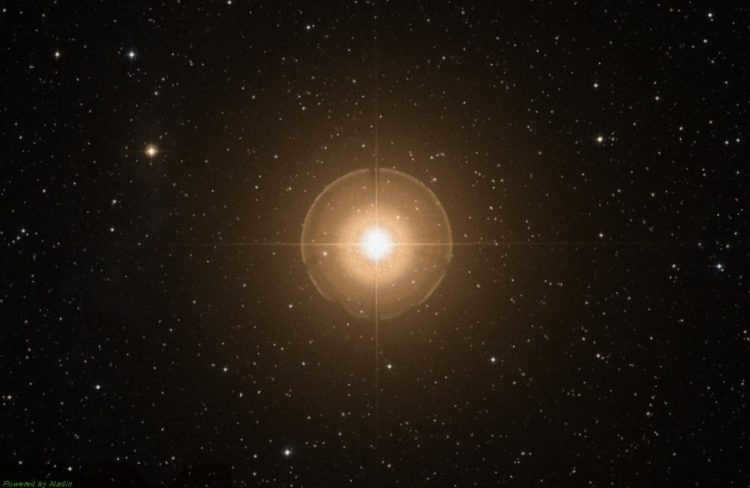
The subsequent brightest celestial body is Sheat, or the beta of Pegasus. Its name can be interpreted from Arabic as “knee” or “shoulder”. This celestial body belongs to the red giants and possesses an unstable stellar magnitude of 2.47m. Sheath is a characteristically changeable celestial body, so its stellar magnitude can fluctuate between 2.31m…2.74m. This occurrence can be accounted for by the pulsations of the celestial body itself, as well as the existence of a gas envelope surrounding it, which is formed by the stellar wind emanating from Sheat.
Macrab
can be paraphrased as
Macrab
is capable of being rephrased.
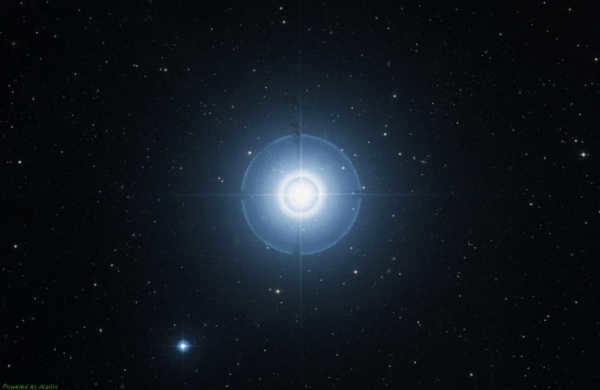
Makrab, the third brightest star in the constellation being examined, derives its name from Arabic, which means “saddle” or “carriage”. Makrab has a star magnitude of 2.49m. This particular celestial body is situated at the furthest point of its stellar evolution, positioned on the main sequence of the Hertzsprung-Russell diagram. Observations of Makrab indicate that it will soon progress into the helium burning stage and transform into a red giant. The Sun will encounter a similar fate in the near future. Scientists predict that Makrab’s stellar lifespan will conclude as a white dwarf.
Fascinating items within the constellation
Aside from the aforementioned primary trio of stars Makrab, Enif, and Sheat (along with an additional 163 others), this constellation also contains entire galaxies and globular clusters. This remarkable feature not only solidifies its status as one of the oldest constellations in the night sky but also makes it exceptionally unique. Therefore, what other hidden treasures lie within the vicinity of this celestial formation?
M15
can be rephrased as
M15 Motorway
or
Highway M15
.
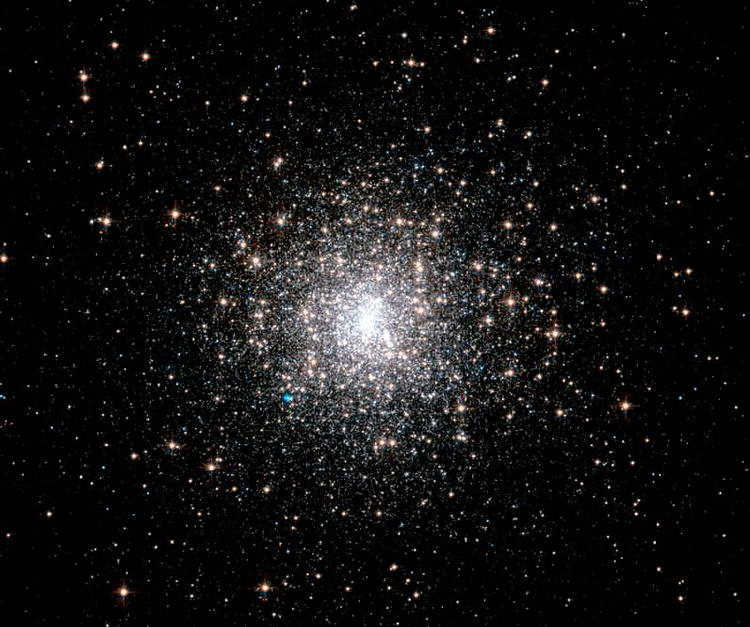
The first cluster to be mentioned is the M15 cluster. Included in Messier’s catalog, M15 is a globular star cluster located 34,000 light-years away from our planet. It has a stellar magnitude of 6.4m. A fascinating fact about M15 is that it is one of the densest clusters in our galaxy, housing approximately one hundred thousand distinct stars.
M15 is one of the most densely packed globular clusters in the Milky Way galaxy. This cluster contains numerous pulsars and variable stars, with scientists having discovered around 120 variable stars so far, most of which are cepheids. Interestingly, astronomers have yet to determine what lies beneath the multitude of stars at the core of the cluster: a massive black hole or an immense concentration of stars.
51 Pegasus
51 Pegasi b: The First Exoplanet Discovered around a Sun-like Star
51 Pegasi b, also known as Dimidium, was the first exoplanet discovered orbiting a sun-like star. It was discovered in 1995 by Swiss astronomers Michel Mayor and Didier Queloz. The discovery of 51 Pegasi b was groundbreaking and revolutionized our understanding of the universe.
51 Pegasi b is located approximately 50 light-years away from Earth in the constellation Pegasus. It is a gas giant, similar in size to Jupiter but much closer to its star, completing an orbit in just 4.2 Earth days. This close proximity to its star means that 51 Pegasi b is extremely hot, with temperatures reaching over 1,000 degrees Celsius.
The discovery of 51 Pegasi b challenged the prevailing theories of planet formation. Prior to its discovery, it was believed that gas giants could only form in the outer regions of star systems. However, the presence of 51 Pegasi b demonstrated that gas giants could also exist close to their parent stars.
Since the discovery of 51 Pegasi b, over 4,000 exoplanets have been discovered. It has opened up a new field of astronomy and sparked an increased interest in the search for extraterrestrial life. Scientists continue to study and learn more about this remarkable exoplanet and its implications for our understanding of the universe.
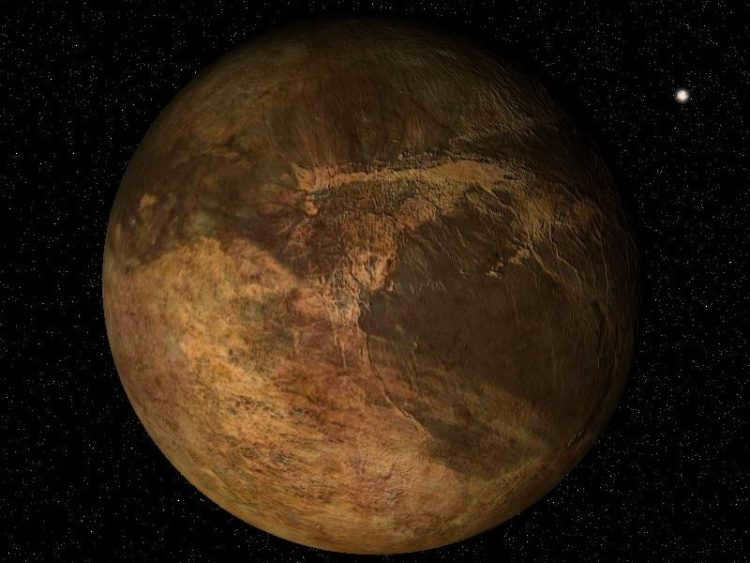
One more fascinating celestial body is the star 51 Pegasus. This particular star bears resemblance to our own Sun and stands out due to its possession of a planet in its orbit. This planet was first detected by Swiss astronomers a mere twelve years ago. It whirls around its sun, 51Peg, at an amazing speed, completing its full revolution in just four days, and reaching temperatures as high as 1000C.
The Einstein Cross
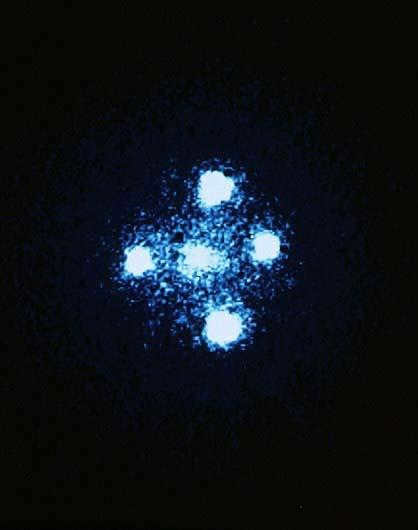
The following unique item is known as Einstein’s Cross. It is an extraordinary occurrence known in the scientific community as a gravitationally-lensed quasar. Situated 8 billion light years away from a specific galaxy, which is roughly 400 million light years distant. This galaxy is encompassed by four separate images of the quasar, which arise from the division of the quasar’s gravitational waves by the gravitational field of the galaxy. As a result, Einstein’s Cross forms an almost flawless cross shape, with the specified galaxy positioned in the center.
NGC 7331
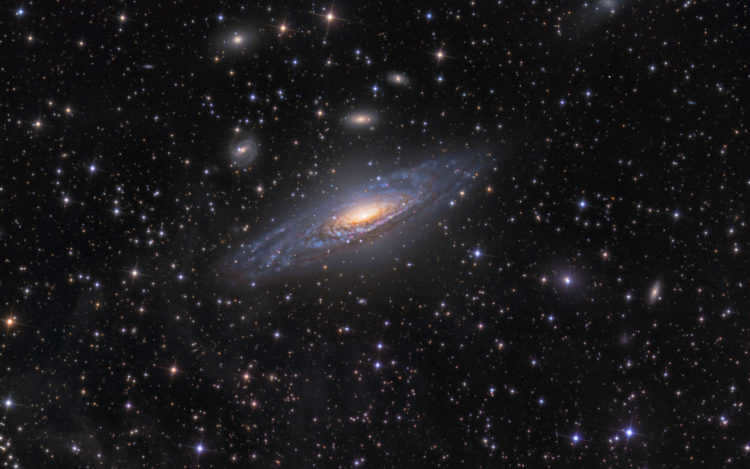
NGC 7331, also known as the Seyfert galaxy, is located 38 million light years away from our planet. Scientists have been studying this galaxy, which was first discovered in 1784, to better understand the structure of our own Milky Way galaxy.
The group of galaxies known as Stephan’s Quintet.
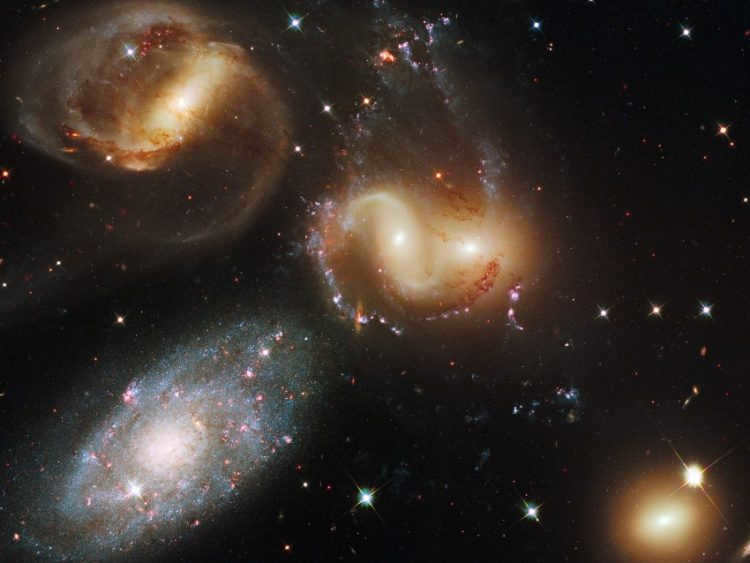
If you’ve never come across a collection of interconnected galaxies like the Stephan Quintet, then raise your hand! In fact, this image of multiple galaxies interacting can be found in astronomy books, various astronomical websites and forums, magazines, and specialized newspapers. Many individuals attempt to locate this group using telescopes ranging from 100 to 150 millimeters, but unfortunately, they are unsuccessful. It is crucial to understand that the combined brightness of these galaxies is below the 13th magnitude of a star. Furthermore, these galaxies are situated at an incredibly vast distance of approximately 270 million light-years away from us. To even partially discern this cosmic marvel, a telescope with a main mirror diameter of at least 250 millimeters is required. And let’s not forget about the need for ideal weather conditions.
The spiral galaxy NGC 7814
is a remarkable celestial object that captivates astronomers and stargazers alike. It is a prime example of a spiral galaxy, showcasing its distinct arms that gracefully swirl outward from its bright core. NGC 7814 is often referred to as the “Little Sombrero” due to its resemblance to the iconic Sombrero Galaxy. This stunning galaxy is located approximately 40 million light-years away in the constellation Pegasus, making it a prominent feature in the night sky. Its mesmerizing beauty and intricate structure make NGC 7814 a popular subject of study and admiration for astronomers and space enthusiasts worldwide.
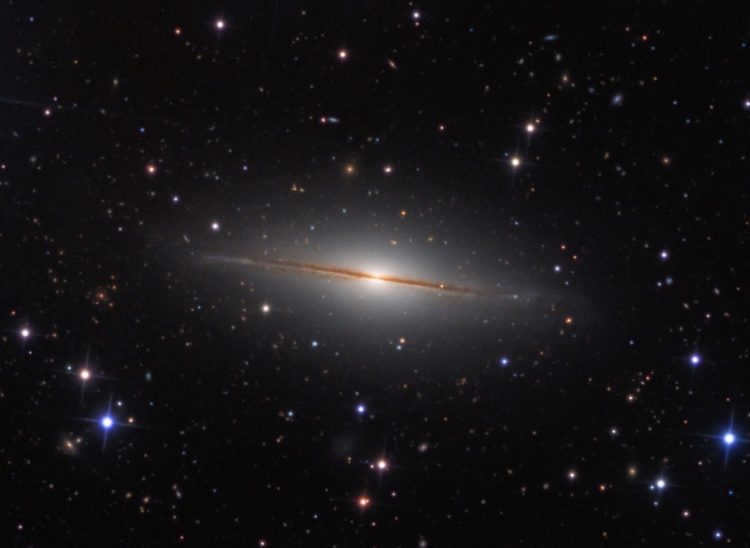
The stunning spiral galaxy known as NGC 7814 is classified as an Sb type galaxy. Its orientation to us allows us to see it from its edge, revealing its beautiful structure. With an elongated angular size of 5.5′ × 2.3′ and an apparent stellar magnitude of 10.8 m, NGC 7814 is a captivating sight.
When observing NGC 7814 with telescopes that have an aperture of 300 millimeters or larger, one can observe a dark dust streak in the central plane of the galaxy. Unfortunately, telescopes with smaller diameter main mirrors do not have the capability to reveal such intricate details. For instance, a 254 millimeter telescope only shows an oval flattened shape and a distinct central region of the galaxy.
Locating an object in the sky can be achieved without much difficulty: you can begin by charting a course from the fourth most luminous star in the Algenib constellation (γ Peg) and then gently elevate and rotate the telescope tube in a clockwise direction. When observing from a different perspective, the galaxy stands out clearly amidst the surrounding multitude of stars.
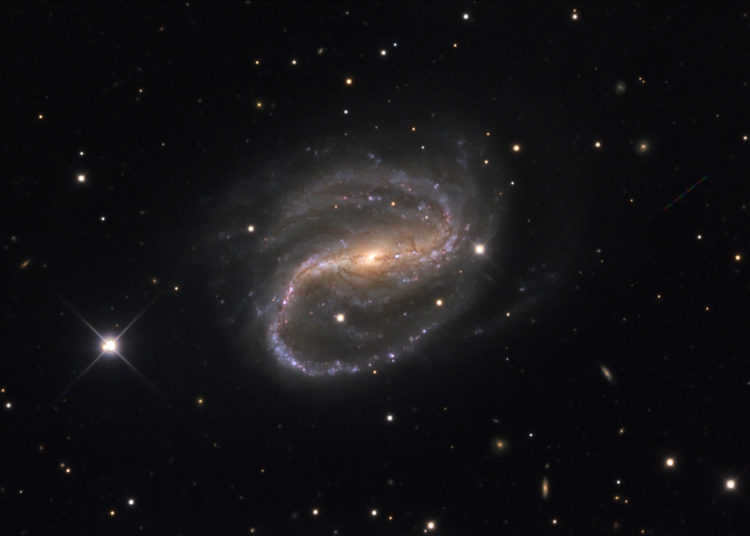
This stunning sweater spiral galaxy is a fantastic example of what can be achieved with a large aperture and pristine skies. As the telescope’s diameter increases, it reveals greater and finer details. In a smaller telescope, you can expect to see a symmetrical beam of light resembling a rib or lenticular galaxy, while larger telescopes will unveil even more intricate features.
It is worth noting that Caldwell’s catalog categorizes this galaxy as number 44. When observing with a 10-inch telescope, you can clearly see the galaxy’s arms and its elongated center that stretches vertically. However, the level of detail visible to the naked eye will be limited. The image above captures this galaxy using a 2-meter telescope at a French observatory.
To begin your search for the galaxy, it is recommended to start from the star Markab (α Peg), which is the third brightest star in the constellation Pegasus. It may be a bit confusing, as the Latin star designation does not always correlate with brightness levels. However, this should not be a major concern. Moving away from Markab, you can gradually navigate towards the desired galaxy using the landmarks indicated on the map provided below. Avoid attempting to bring the galaxy directly into the center of the eyepiece field of view, as it will reveal more intricate details when observed from the side vision at the edge of the field of view.
The myth of the constellation Pegasus
There exist various interpretations of the origin of Pegasus. One version suggests that the majestic winged horse, with its snow-white coat, came into existence as a result of the passionate relationship between the gorgon Medusa and Poseidon, and was born at the source of the Ocean. In Greek, the word “Pegasus” translates to “Source.”
Another version claims that Pegasus emerged from the drops of blood shed by Medusa during her battle with Perseus. Following his birth, the winged horse was taken by Zeus to Olympus, where he served as a loyal companion, carrying out tasks such as delivering thunder and lightning.
We are all familiar with Pegasus being referred to as the “horse of the Muses.” According to one myth, while on Helicon, Pegasus struck a rock with his hoof. This caused the Hippocrene spring, also known as the “horse spring,” to burst forth from the crack, providing poets with the inspiring water.
How can I locate a constellation?
To locate a constellation, it is easiest for observers in the Northern Hemisphere to start looking in late summer. During this time, Pegasus can be seen rising high above the horizon and will remain in this position until the end of fall. On the other hand, observers in the Southern Hemisphere should start looking for the constellation in late fall and early spring. Throughout the spring season, there will be a wide range of objects within the Pegasus constellation that can be closely observed.
If you possess knowledge in the field of astronomy and have previous experience with stargazing, it is imperative that you familiarize yourself with the constellation Andromeda and its visual representation. To locate the constellation Pegasus, simply shift your gaze westward from the chain of stars in Andromeda. Take a closer look and you will be able to spot Pegasus positioned behind the radiant stars of Andromeda. Alternatively, you can identify the winged horse by orienting yourself towards the stars that border the Northern Cross. The most optimal period for observing Pegasus is during the autumn and late summer months. Those with limited experience or knowledge will find it relatively easy to locate Pegasus by using the Great Square of Pegasus as a guide.
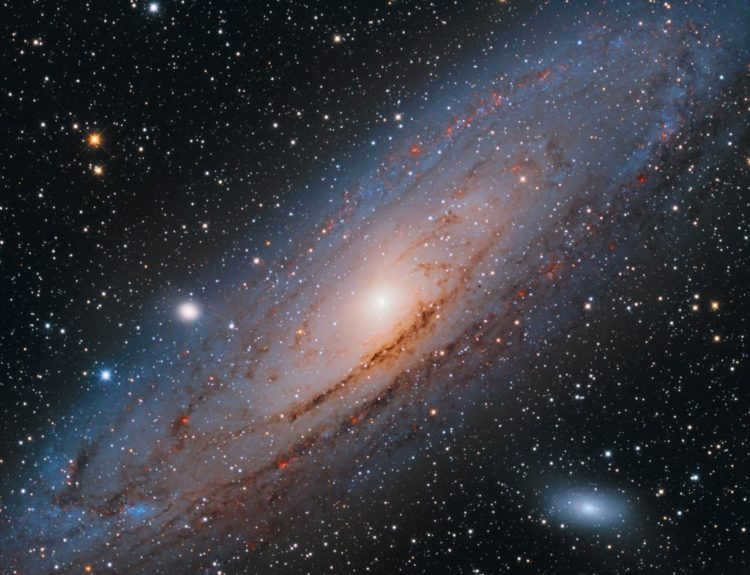
All the stars in the Pegasus constellation have a connection to horses and their names are derived from Arabic. For instance, Enif is named after the word for “nose”, Sheat after “shoulder”, Markab after “saddle” or “carriage”, and Algenib after “horse’s navel”. The most prominent stars in the constellation, Enif, Sheath, and Markab, form the Great Square of Pegasus. In fact, anyone who desires can locate this constellation using this pattern.
One notable feature of the Pegasus constellation is that it does not include the star Delta Pegasus. Prior to 1928, this star was considered part of the winged horse and was situated between Andromeda and Pegasus. However, it was later reassigned to Andromeda, resulting in Delta Pegasus becoming Alpha Andromeda. It is worth mentioning that the constellation is home to the Pegasid meteor stream and several galaxies, including NGC 73331. Among these galaxies is a Seyfertian spiral galaxy, which is commonly used to represent our own Galaxy.
Clip
The vast expanse of the cosmos has always held a special fascination for individuals of all ages. Stars have been and continue to be the primary focus of study and observation. The billions of small planets that make up entire systems capture the attention of the curious. Thousands of years ago, people looked up at the night sky and saw animal shapes in the stars, giving them names. They believed that the sun and planets were deities who used the celestial bodies to communicate with the inhabitants of Earth. It was clear that there was a connection between the stars, the Universe, and our planet. From ancient times, people have learned to interpret and predict based on the stars. This gave rise to the sciences of astrology (prediction based on the stars) and astronomy (the study of stars).
Studying the stars has become an intriguing hobby for humans. To navigate the vast expanse of the cosmos, the celestial sphere has been divided into sections known as constellations, each with its own unique name. In ancient times, clusters of stars were named after gods and animals they resembled. Currently, the international astronomical union has officially recognized 88 constellations. Some of the most well-known star clusters in the southern hemisphere include Libra, the Southern Cross, and Centaurus. In the northern hemisphere, notable star clusters include Cassiopeia, the Big Dipper, and the constellation Pegasus. An awe-inspiring photo of the latter can be found within this article.
Flight of the nocturnal equine creature in the starlit heavens

How can one locate the constellation?
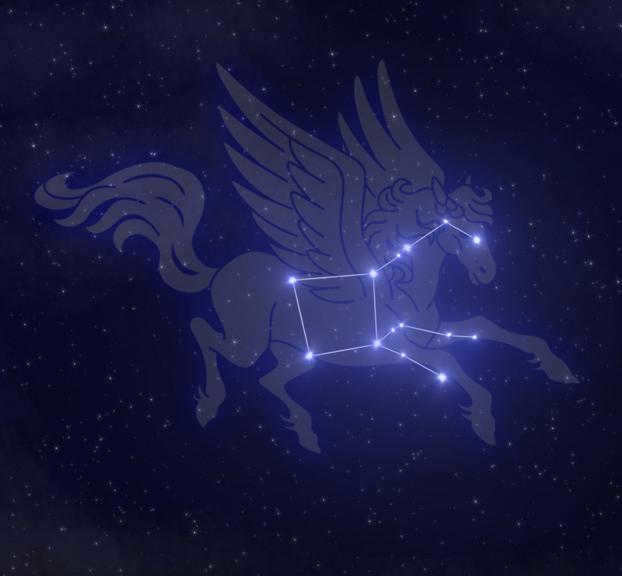
If you possess a background in astronomy and have spent time observing celestial bodies, you should be familiar with the constellation Andromeda and its appearance. Direct your attention to the chain of stars within this constellation and shift your gaze towards the west. Engage in careful observation. Beyond the stars of Andromeda, you will come across the constellation Pegasus. Alternatively, you can locate the winged horse by using the Northern Cross as a reference point, as its stars border Pegasus.
The most optimal time to observe Pegasus is during the autumn and late summer months. Even individuals with limited experience and knowledge will have no trouble locating Pegasus by using the Great Square of Pegasus as a guide.
Curious information about the constellation known as Pegasus
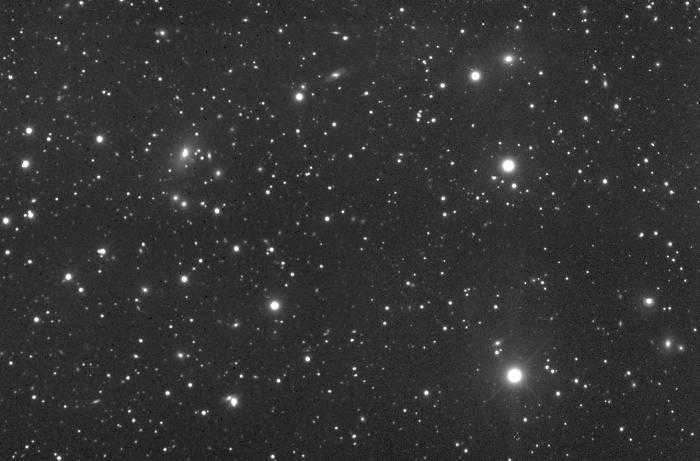
All the stars in the Pegasus constellation are associated with horses. Their names are derived from Arabic. For example, Enif means “nose”, Sheat means “shoulder”, Markab means “saddle” or “carriage”, and Algenib means “horse’s navel”. The brightest stars (Enif, Sheat, and Markab) form the Great Square of Pegasus. In fact, anyone who desires can locate this constellation based on the Great Square.
The Pegasus constellation has a unique feature: it does not contain the star Delta Pegasus. Prior to 1928, this star, located between Andromeda and Pegasus, was considered part of the winged horse. However, it was later reassigned to Andromeda, becoming Alpha Andromeda.
Legends and folklore surrounding the mythical creature Pegasus

There are multiple legends surrounding the constellation Pegasus. In Greek mythology, Pegasus is a magnificent winged horse that was born from the union of Poseidon and Medusa Gorgon. Once born, Pegasus faithfully served Zeus, delivering lightning and thunder. These winged horses were also bestowed upon ordinary mortals by the gods, serving their masters until death.
According to an alternative account, Pegasus emerged from the blood of Medusa after she was slain by Perseus.





